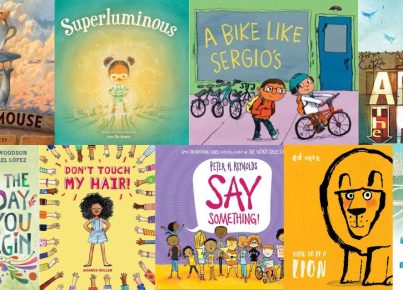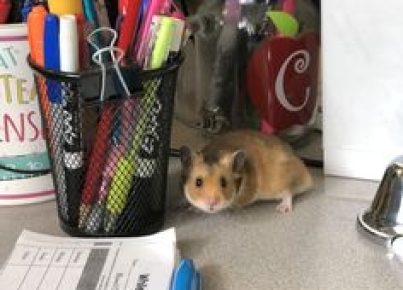Are you looking for apps, tools, and resources that you can use to help your students learn to code? If so, we have you covered. Check out our list below. Let us know if there are any that we missed.
Kodable– Kodable teaches coding to kids from ages 4 through 10; it is the only complete coding program on the market. This app can be used for an individual student or for a whole school district. Kodable encourages problem-solving and critical-thinking skills while informing children of algorithms, syntax, variables, and more. These are all crucial skills that coders must acquire to succeed in computer programming. With the assistance of the app’s fuzz family avatars, children can learn computer science with friends.
Cubelets Blockly – This is an app that teaches children to code by using a block-based visual programming system. First, children arrange puzzle Cubelets to create a program; then, they connect an iPad, PC, Mac, or Chromebook over a Bluetooth network. Each Cubelet can then be programmed with its own set of codes. There are three types of Cubelets: Sense, Think, and Act. Sense Cubelets collect data; Think Cubelets interpret the data (a rudimentary brain), and Act Cubelet act on the information processed.
Codecademy– This website provides an easy, enabling, and practical environment for young ones to learn how to code. In this fast advancing technological age, most establishments are looking to take classes to an online platform different from the generic traditional classroom settings of dating back to the nineteenth century.
Gimkit – Gimkit is a browser-based tool that simulates a game show that requires students to compete against one another in a controlled classroom environment. Excellent performance is rewarded with coins that students can use in-game to buy utilities to improve their scores. Students can compete in teams or against one another, connecting via game codes on any Internet-enabled device. KitCollab mode allows students to submit their questions before the game begins.
Codea– This coding app aims to teach young children coding with the aid of visual stimulation. Kids learn to bring their creative ideas to life on this app via games and simulations. Codea makes use of cool iPad functions such as the accelerometer and multi-touch features to help bring ideas to life.
Learn to Code with El Chavo– For ages five through eight, Learn to Code with El Chavo is an interactive game to educate young ones about the world of coding. While developing critical-thinking skills and spatial reasoning, they develop knowledge about the logic behind computer coding. Computer coding and programming can be a hard concept to teach from a book or through a presentation. When learning through a game, children become their own teacher; they become self-reliant, but they can get assistance when needed. As a parent or teacher, you can learn alongside them as well.
Lightbot: Programming Puzzles– Lightbot: Programming Puzzles is an introductory coding game for all children. While learning loops and conditionals, children will be operating with lights, commands, and logic. Computer coding can be hard for adults, let alone children, but Lightbot will surely benefit any child’s learning in a highly positive way. This is the perfect app for basics in programming, coding, and computer science; it contains over 50 levels.
CodeMonkey– This app teaches coding using computer-aided learning to integrate gaming and education. This allows students to improve their objective analysis using a task-oriented problem-solving approach. They are ably supported and instructed through the learning process by a walkthrough of the overall process; this feature allows instructors to teach without being acquainted with this tool beforehand.
Minecraft: Education Edition– This version of Minecraft will help you learn. Whether computer science, wilderness conservation, chemistry, coding, math, STEM topics, and more, you can learn educational topics the fun way. If you love Minecraft, you will surely love this version.
Mozilla Thimble– Mozilla Thimble is a web browser-based computer programming site. You can write and edit in HTML and CSS with just a few clicks and be on your way to remixing code and learning the ins and outs of programming. After you create your web pages, you can host them and share them from the website. Mozilla Thimble lets you master your coding skills and share them with the world.
Osmo Coding Awbie– Osmo Coding Awbie is an app that teaches children to program by making them control Awbie—the fun-loving character that loves strawberries—by using coding blocks. Each block contains a coding command that guides Awbie on his tree-shaking, strawberry-consuming adventure. Children indirectly develop logical reasoning and problem-solving skills. The app equips children with the tools they need to thrive in an ever-evolving world. Osmo Coding Awbie uses its reflective artificially intelligent technology to promote creativity, problem-solving, and social interaction.
Robot School – Programming For Kids– Robot School – Programming For Kids introduces children to coding by helping Robbie the robot to find the fuel he needs to get home after his spacecraft crashed in a faraway galaxy. Use drag and drop programming to help Robbie find the resources he needs to make the journey back home. Robot School ensures a child-friendly environment to learn procedures, loops, and conditional instructions. It makes programming exciting and attainable for users with different levels of knowledge.
Code Combat Computer Programming– This fun game brings coding knowledge and resources to everyone starting from the age of 6. With the shortage of knowledge acquisition sources about programming, this app presents a great opportunity for everyone to access these materials irrespective of time, age, and economic resources. Advance through the stages of the game by learning and applying basic concepts of programming.
robots4STEM– A visual programming platform that provides students with the foundational knowledge required for computer science development. It uses a drag-and-drop programming system to teach students the logic of programming while they control Jett, a facially expressive, responsive, humanoid robot. This platform provides countless opportunities and activities to develop essential coding and programming abilities, and it is quite easy to install and use. It does not require a high level of coding or programming experience or proficiency for teachers and parents.
Scratch-Scratch is a free open network made available by MIT to assist young folks in learning to think and reason systematically. Scratch makes room for students to design and share their coding work with others around the universe. It allows them to create stories, games, and animations to assist in sharing their vision with others on the platform. On this platform, you can program your own interactive stories, games, and animations and share your design with others in the online community.
CoderZ by Intelitek– This platform enables schools to make artificial intelligence and computer technology readily accessible to students. It is a cost-effective, communicative, and captivating online platform that drills, prepares, and provides a simulation environment for students in grades 6 to 12. It prepares them for the rigors that they might experience in real life.
Sketch Nation Create– From kids to adults, Sketch Nation Create allows users of all skill levels to design, create, and play their own online video games. By letting kids explore, investigate, and create games with multiple levels and settings, this app builds game design and coding skills in a fun and interactive manner. Students can design all the characters, obstacles, challenges, and stories in their games and even share them online with family and friends. Budding artists can include their own artwork and photos, bringing their ideas to life. Sketch Nation Create can be used with success in a variety of classes, from art to literacy and beyond!
Tommy the Turtle– For children interested in learning to code, Tommy the Turtle is a basic introduction to the commands, sequences, and loops involved in the coding process. Children are guided through coding to make Tommy the Turtle sing, dance, and move on stage. There is also a challenge mode where children are asked to solve more advanced coding problems independently or with friends. This app can be used at home or in the technology classroom. Coding helps children develop problem-solving skills and become more comfortable using technology.
Coda Game– This app motivates children to enter the world of programming without introducing them to the strings of long texts involved in coding that might dissuade them.
Tynker– Tynker is a one-stop shop for coding education. Designed for students 7+, Tynker uses interactive self-paced learning to take children from the beginner stages of coding, such as sequencing and pattern recognition, to the advanced stages such as learning JavaScript or Python. Using the website, children can learn to control toys, create apps, mod Minecraft, and build games. It can be used independently at home or in the classroom. The website also provides a programming curriculum for schools and camps.
Code Avengers– This platform teaches advanced levels of students to program using real code. It includes immersive courses that teach web and app development as well as languages such as HTML, CSS, and JavaScript. Teachers get real-time feedback, alerting them to areas where students might require assistance. It is most useful for students at the high school and higher levels who want to learn to program.
Fullstack Academy– With Fullstack Academy, you have access to the most recent web technologies along with traditional computer science concepts through our JavaScript-focused curriculum. Fullstack’s 13-week immersive coding Bootcamp offers software engineering courses that will prepare you to become a software engineer ready to work in start-up companies and world-class companies such as Facebook, Dropbox, and Google.
Codeable Crafts– Codeable Crafts provides a fresh perspective on teaching coding for beginners using basic crafting skills (coloring, stickers, cut-out figures). It opens with a tutorial that leads children to choose either My Sketchbook or My Storybook to start to create. Children create characters in the sketchbook and animate them in the storybook using basic coding blocks to create sounds, movement, and text.
Stencyl – This program allows users to create games with little or no programming knowledge. Users can create games by simply joining blocks of code that can be published across platforms. People with some knowledge of coding would find this easier to use than a novice. By purchasing Stencyl, users can play and share the program on other platforms, including iOS and Android. The game includes helpful tutorials and a live chat area.
Codemoji – Codemoji’s computer science curriculum for schools teaches first through eighth-grade students the basics of web development and coding, including HTML, CSS, and JavaScript. In a fun and easy way, students learn to create their websites, animations, and more. The tool simplifies website building by using emojis to represent different commands; each lesson takes the student step by step through the design process. Students can test-run their programs and get feedback on their success.
Grasshopper: Learn to Code – This tool can be used to learn JavaScript coding. It is available on both Android and iOS devices. A user can start as a beginner and skip lessons that cover topics with which they are familiar. The app is divided into four courses, each of which has detailed information about how to write real JavaScript code.
Code.org– The objective of this program is to make computer science available in schools nationwide. The end goal is to get more children, including social minorities (females and students of color) involved in the computer and programming scene.
TapCoding– TapCoding is an iOS platform designed to teach users the use of Swift, which is Apple’s programming language. With TapCoding, students learn about the basics of coding and other aspects such as programming functions and the use of data. Each level offers students instruction on a programming language. TapCoding isn’t a game; its purpose is to help the user build useful programming skills.
codeSpark Academy– This platform appeals to kids by taking advantage of their attraction for brightly colored objects and domestic animals. These are integrated into the problem-solving steps so that children learn to code at an early age.



